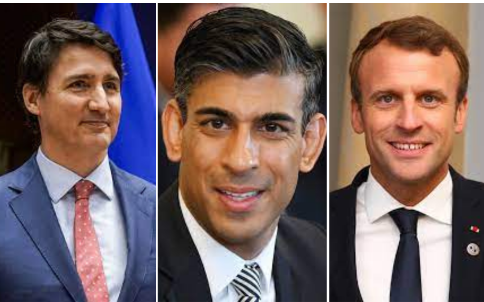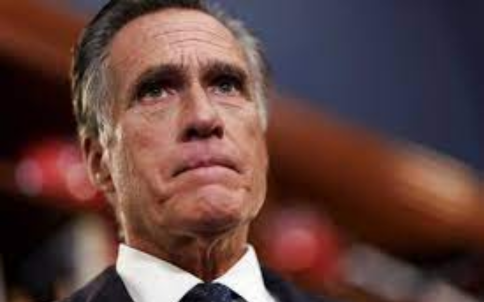Photo writeup: Mitt Romney, Republican Senator who voted for Trump’s trial
Musings by Shekhar Nambiar
Age is no longer just a number, at least among Republicans in America. There have been several senior politicians calling it quits. The latest leader to announce his possible exit next year is Mitt Romney.
Earlier, in 2021 ahead of the 2022 mid-terms, five senior Senators had announced their retirement in what seemed to be increasing disenchantment with the system. The Trump presidency had taken politics to the brink driving deep divisions within American society. These Republican senators – as did Romney – voted to convict Trump. This was a historic first when partymen voted to convict a president from their own party in impeachment trials.
Also read: Biden, G20 & Bharat
Calling it quits
A conservative from Utah, Romney had been the Republican candidate for Presidency in 2012 with Barrack Obama as his challenger. He had an easy victory into the Senate in 2018, but has had to face stiff resistance from Trump loyalists since then.
Romney’s is a genteel face among an increasingly careening-to-the far-right Republican Party.

In announcing his decision, he has called for younger faces to take the leadership of both the Republicans and Democrats, indicating Donald Trump and President Biden opt out of the race.
He has cited the rising national debt and failure to address climate change issues as among their failings. The latter is an issue that Trump has sworn to oppose, calling it “mythical” and “non-existent”. At Davos in 2020, with sustainability as the theme and Greta Thunberg as the star attraction, he termed all forms of climate activism as “alarmist”, yet in a seeming contradiction, he endorsed US’s support to plant one trillion trees.
Also read: Social literacy, education and life skills
Ageing leadership
A Mormon, Romney, now in his mid-seventies, has said he would be in his eighties if he were to seek and serve as President or continue to be in the Senate.

Age has never been an issue in US politics. Joe Biden is the oldest to take oath as President, at 77. JFK was only 43 and the youngest President to have assumed the high office. Between the two a host of presidents – from Lyndon Johnson, Ronald Reagan, George Bush Sr to Jimmy Carter and Donald Trump, none qualified to be in the young league.

Emerging trend
This is in contrast to other countries where there has been a generational shift in leadership.
Canada’s Trudeau, Rishi Sunak in the UK and Macron of France are younger people and bring a refreshing change among aging leaders elsewhere.
India has had several elderly heads of government, among them Morarji Desai was really old but fit as fit can be. Deva Gowda didn’t shine as PM, and there were others too, including western UP’s Charan Singh, more well known as the representative of kulaks, or rich peasantry.
Also read: Rover’s moonwalk sets India on course for space forays
In the states, there were chief ministers who, despite their advancing age – some ailing too, survived the pressures of office and politics, Achuthanandan in Kerala and Karunanidhi in Tamil Nadu being two who come to mind.
Cut to sixties’ India and we had Jawaharlal Nehru in power for 17 long years, continuing on even as he suffered a stroke and struggled to keep pace with the demands of running a government.

Change in India
The Modi government, now nearing the end of the second term, has done well by putting a cap on age and not having too many aged men in office.
The average age of ministers in the current Cabinet is 60 and that of the 17th Lok Sabha 54 years, with 12% of MPs below the age of 40 according to one estimate. Women too seem to be better represented although it will still be some time before there can be gender parity of any sort.
Infra wonders
Nitin Gadkari, Union Minister for Road Transport & Highways, is 66 and he was 56 when he was appointed to Modi’s Cabinet. Gadkari wears his achievements lightly. He’s one of the busiest Ministers going in the Union Cabinet. The pace at which infrastructure is being developed in India is stuff that is making international headlines, including a segment in Fareed Zakaria’s show when he was here recently for the G20 Summit.

Sample tidbits that Gadkari told a major Hindi-language news channel in a matter-of-fact manner – the clip of which is doing rounds on social media: how improved connectivity will do wonders for people headed to Indira Gandhi International Airport (IGIA), Delhi, from far off Punjab, Himachal and Uttarakhand. He told the reporter that it would take a mere 20 minutes to reach IGIA from Panipat using the two-tier highway, including an eight-lane road tunnel near Delhi’s Dwarka linking Terminal 3, passing below a runway and the new Eastern Cross Taxiways, a first in India.

Time to leave
An average age of 70-75 is good enough for leaders to draw the line before they quit politics. This is in keeping with increased life expectancy and people generally having relatively better health.
There is every reason to believe that younger leaders have shown their capabilities and proven beyond doubt they are second to none.
Also read: A firm hand to deal with errant China
PM Modi has used the younger talent in his party effectively. Some of the better performing ministries have younger people at the helm. They bring innovative ways of doing things and contribute with out-of-the-box thinking.

Totalitarian regimes
Nearly 60 per cent Indians are believed to be younger than 35 years. For India to fully take advantage of its demographic dividend, there is perhaps need for more young leaders to fill our legislatures.
Most totalitarian governments have aged or aging leaders. China and the erstwhile Soviet Union being examples. Other classic examples are Fidel Castro and Tito of the former Yugoslavia.
Young leaders
Age can be just a number, especially for those who are able to contribute to their calling or profession and can continue to work for as long as they can or want. But in India, most organizations and corporates, in keeping with the government service norm, retire their staff at 60.
India has the advantage of a large young population from which will emerge a whole new crop of younger leaders. But can the same be said of other countries who do not have much of a choice to select young politicians?
Also read: Indian cities: The challenge and opportunity




